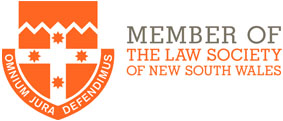
What is a trade mark?
Trade marks are a form of intellectual property right. A trade mark can be used to protect a business name, tag line/phrase or word (a word mark) and/or logo (a figurative mark), but less commonly, it can also be used to protect a letter, colour, sound, scent, picture, movement, aspect of packaging or any combination of these.
Protecting a brand can add to its value as an asset so it is a very important business consideration, particularly if you ever intend to sell your business in the future.
Why have a trade mark?
A registered trade mark provides the holder the exclusive right to use that trade mark in Australia in respect of specified goods and/or services. This means that the holder of such an intellectual property can legally prevent others from using the trade mark for similar goods and services.
The holder of a trade mark can sell the mark to a third party or allow others to use that mark, for example for a fee, such as through a licensing arrangement. Often a franchise agreement also includes a license to use the trade mark of the franchised business.
Many business owners mistakenly believe that registering a business name or domain name gives them some sort of ownership of that name - this is not the case.
What requirements are there to register a trade mark?
The Trade Marks Act 1995 (Cth) and the Regulations under that Act govern trade marks in Australia.
In order to be registered, a trade mark must be able to distinguish the goods and services of the holder from other traders. It can’t be an everyday word or phrase, a geographical name or be descriptive of the goods or services (as other traders may need to use those words to describe their wares). Further, some signs and names are prohibited from registration.
When seeking registration, certain categories of goods and/or services must be chosen. The protection of the trademark is only in that category (or categories) chosen and only for the types of goods/services described in the application.
A trademark lasts for 10 years but can be renewed for successive periods.
How to help protect your trade mark
Having a registered trade mark gives the owner the right to place the ® symbol next to the trade mark so as to let others know it is registered and to help deter them from using it (without permission).
When a trade mark is not yet registered but an application is pending, the TM symbol can be applied to the mark. There is no requirement to use the ® or TM symbols however. use of the ® symbol in connection with a mark that is unregistered in Australia is an offence under the Act.
Trade marks must be used as registered. Failing to use a trade mark can render it liable to being removed from the register for non-use.
Registration of a logo that includes a trading name does not necessarily protect the trading name, just the logo. This is why the name often needs to be separately registered. Care needs to be taken to consider what is to be registered and how it will be used. Separate registrations are often advised for a name and for a logo.
If you have a trade mark and become aware of someone infringing it (such as by using a very similar name or logo without your consent or indicating they have some association with your business or products when they do not), you should get advice from a lawyer on sending an appropriately worded cease and desist letter asking them to stop using it.
What if your trade mark isn’t registered?
Registration of a trade mark is not essential. Unregistered trade marks can possibly be protected under the common law, such as through the tort of ‘passing off‘ and claiming misrepresentation such as under the Australian Consumer Law however, registration if recommended.
FURTHER INFORMATION
For further information, please contact McKillop Legal on (02) 9521 2455 or email help@mckilloplegal.com.au
This information is general only and is not a substitute for proper legal advice. Please contact McKillop Legal to discuss your needs.


